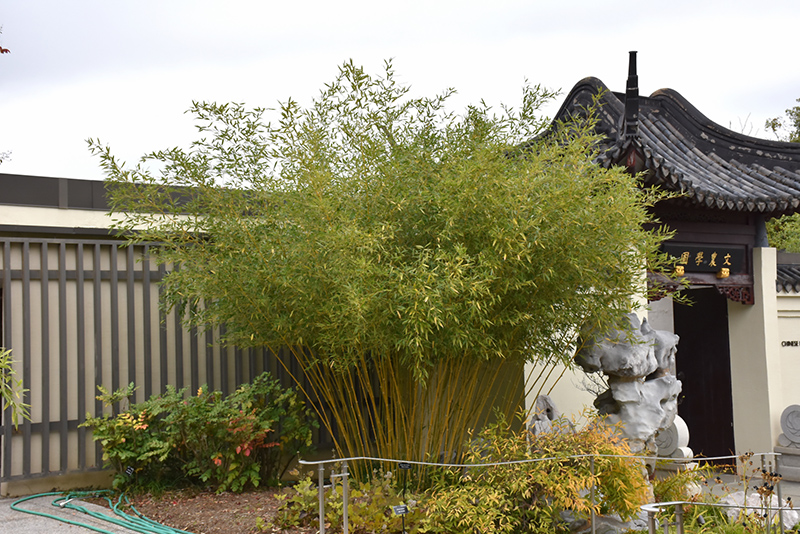>> Home
Height: 15 feet
Spread: 24 inches
Sunlight:
![]()
![]()
![]()
Hardiness Zone: 5
Other Names: David Bisset Bamboo
Description:
This very hardy bamboo has rigidly upright canes with dark green culms and evergreen foliage; forms an extremely dense canopy; excellent for containers and makes a great privacy screen in the ground
Ornamental Features
Bisset's Bamboo is primarily valued in the landscape for its pronouncedly upright and towering form. Its pointy leaves remain green in color throughout the year. The green stems are very colorful and add to the overall interest of the plant.
Landscape Attributes
Bisset's Bamboo is an herbaceous evergreen perennial with a rigidly upright and towering form. Its relatively fine texture sets it apart from other garden plants with less refined foliage.
This is a high maintenance plant that will require regular care and upkeep, and is best cleaned up in early spring before it resumes active growth for the season. Gardeners should be aware of the following characteristic(s) that may warrant special consideration;
- Spreading
Bisset's Bamboo is recommended for the following landscape applications;
- Mass Planting
- Hedges/Screening
- General Garden Use
- Naturalizing And Woodland Gardens
- Container Planting
Planting & Growing
Bisset's Bamboo will grow to be about 15 feet tall at maturity, with a spread of 24 inches. It tends to be leggy, with a typical clearance of 2 feet from the ground, and should be underplanted with lower-growing perennials. It grows at a fast rate, and under ideal conditions can be expected to live for approximately 20 years. As an evegreen perennial, this plant will typically keep its form and foliage year-round.
This plant performs well in both full sun and full shade. It prefers to grow in average to moist conditions, and shouldn't be allowed to dry out. It may require supplemental watering during periods of drought or extended heat. It is not particular as to soil type or pH. It is somewhat tolerant of urban pollution. This species is not originally from North America. It can be propagated by division.
Bisset's Bamboo is a fine choice for the garden, but it is also a good selection for planting in outdoor pots and containers. Its large size and upright habit of growth lend it for use as a solitary accent, or in a composition surrounded by smaller plants around the base and those that spill over the edges. It is even sizeable enough that it can be grown alone in a suitable container. Note that when growing plants in outdoor containers and baskets, they may require more frequent waterings than they would in the yard or garden.

